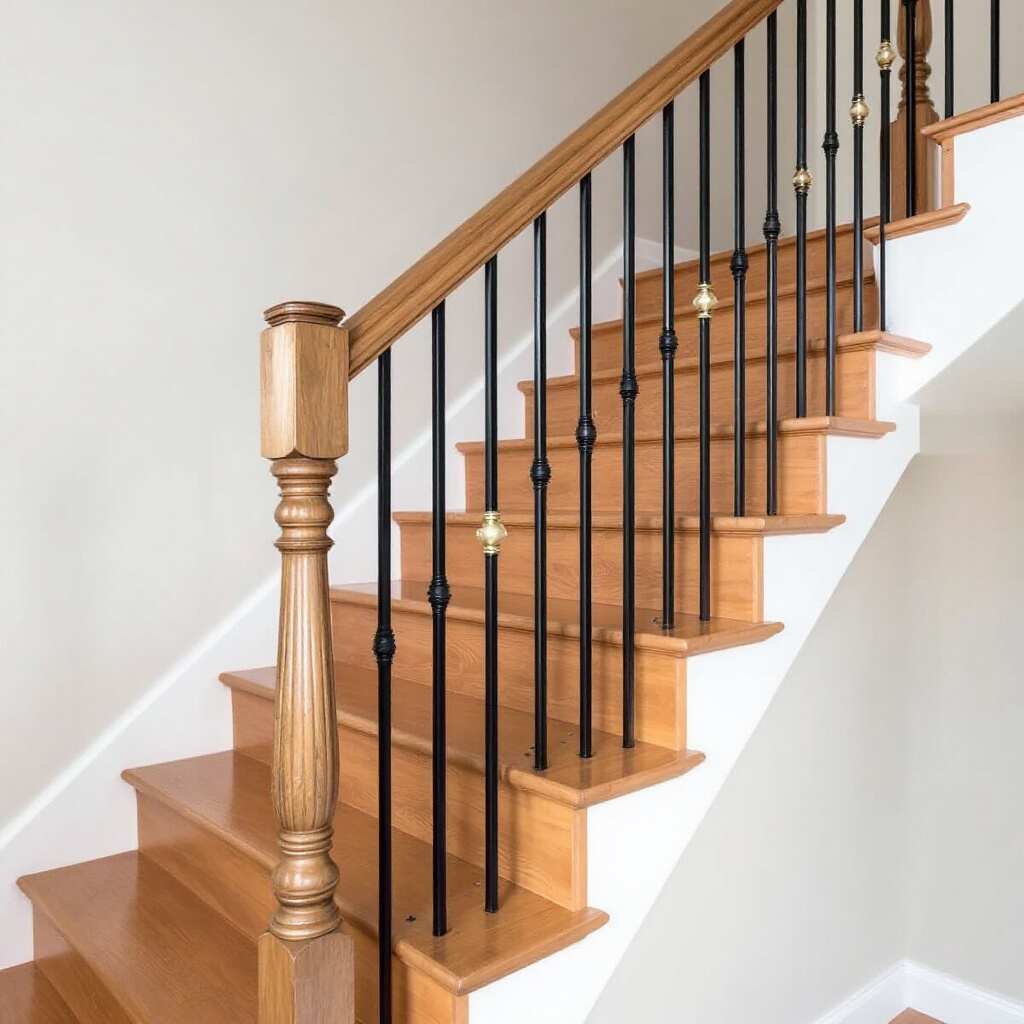Stair railings are an integral part of any building structure. They not only add to the aesthetic appeal of the building but also ensure safety and compliance with building codes. One such type of railing that has gained popularity in recent years is the fascia mount stair railing. This guide aims to provide a comprehensive understanding of the MN Eagan Code for fascia mount stair railings, a topic that is often surrounded by confusion and misinformation.
The purpose of this guide is twofold. First, it aims to demystify the MN Eagan Code for fascia mount stair railings. Second, it seeks to highlight the importance of adhering to these codes for safety, compliance, and aesthetic reasons.
Understanding Fascia Mount Stair Railings

Fascia mount stair railings, as the name suggests, are railings that are mounted on the fascia (or side) of the stairs, deck, or balcony. They differ from traditional railings in their mounting style and offer several advantages.
The aesthetic appeal of fascia mount railings is undeniable. They offer a sleek, modern look that can enhance the overall design of any building. Moreover, they are a space-saving solution, as they do not take up floor space like traditional railings. Lastly, fascia mount railings offer enhanced safety features. They are sturdy and provide a secure grip, reducing the risk of accidents.
Overview of Minnesota Building Codes
Building codes are a set of rules and regulations that govern the design, construction, alteration, and maintenance of structures. They are crucial for ensuring the safety and structural integrity of buildings. In Minnesota, there are both state and local building codes, and it’s important to understand the differences between them.
Minnesota state codes apply to all buildings in the state, while local codes, such as the Eagan codes, may have additional or different requirements. For stair railings, there are several key regulations to be aware of, which will be discussed in detail in the next section.
Specifics of Eagan Code for Fascia Mount Stair Railings
The Eagan code for fascia mount stair railings has specific requirements for height, design, installation, and maintenance.
The height requirements specify a minimum and maximum height for the railings to ensure safety. The design specifications outline the required materials and construction methods for the railings. The installation guidelines provide instructions for proper installation to comply with the code. Lastly, the maintenance considerations offer recommendations for maintaining the railings to ensure their longevity and safety.
Compliance and Inspections
In Eagan, a permit is often necessary for installing fascia mount railings. The inspection process can vary, but generally, it involves a review of the design plans and an on-site inspection to ensure compliance with the code. Common compliance issues include incorrect height, improper installation, and use of non-compliant materials.
Best Practices for Choosing Fascia Mount Stair Railings
When choosing fascia mount stair railings, consider the material, design, and safety features. Different materials, such as wood, metal, and composite, have their pros and cons. The design should match the aesthetics and architecture of your home. Safety features to look for include grip strength, durability, and weather resistance.
Case Studies and Examples
There are several successful installations of fascia mount stair railings in Eagan that comply with the code. These projects serve as excellent examples of how proper railing installation can enhance the safety and aesthetics of a building. Before-and-after comparisons can also provide a visual representation of the impact of proper railing installation.
Additional Resources
For more information, you can refer to the following resources:
- St. Paul Government Document on Stairs and Handrails
- Minnesota Revisor of Statutes
- Minnesota Department of Labor and Industry
- Minneapolis Government Document on Construction Permits
- UltraLox
- City of Eagan Document on Decks
- City of Blaine Document on Stairs, Landings, and Guardrails
- City of Eagan Document on Additions and Porches
Remember, safety should always be your top priority when it comes to building structures. Always adhere to the building codes and consult with professionals when in doubt.

